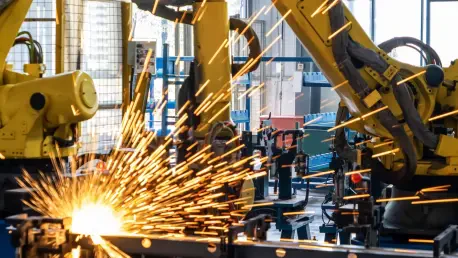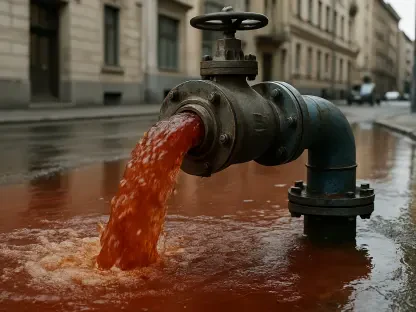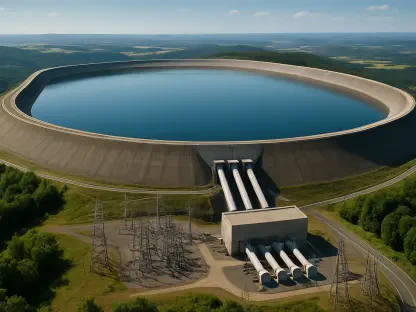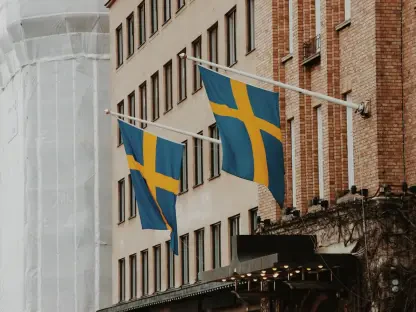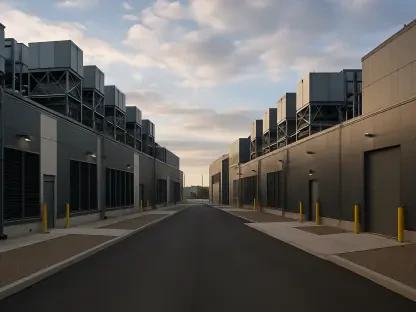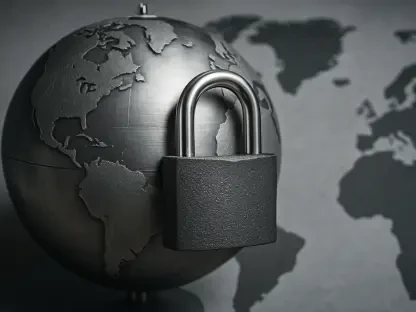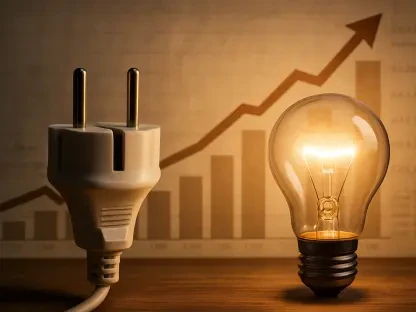In today’s conversation, we have the pleasure of speaking with Christopher Hailstone, an expert in energy management and renewable energy, who provides valuable insights into grid reliability and security. With an extensive background in electricity delivery, Christopher will help us explore the balance between industry growth and environmental preservation within the EU. This interview will delve into topics such as the reduction of industrial emissions, the health impacts of pollutants, and the ambitious goals set by the European Union to achieve carbon neutrality and zero pollution by 2050.
Can you explain the current impact of industrial emissions on greenhouse gas levels and pollutants in the EU?
Industrial emissions in the EU remain a significant contributor to greenhouse gases and other pollutants, accounting for around 40% of emissions and 20% of air and water pollutants. These emissions have direct consequences on both human health and the environment. For example, fine particles like PM2.5 can enter our respiratory system and even the bloodstream, posing serious health risks.
What are the health and environmental consequences of pollutants like PM2.5, NOx, SOx, heavy metals, and ammonia?
These pollutants are quite detrimental; PM2.5 can lead to illnesses and premature death. NOx affects biodiversity and human life, while SOx and heavy metals are damaging to crops and wildlife. Ammonia also poses threats to both human health and the environment, showing how intertwined industrial activity and ecological well-being are.
How have environmental and health costs in the European industry changed from 2012 to 2021, and what factors contributed to this change?
Between 2012 and 2021, there’s been a sizable decrease in these costs, by a third, largely due to innovations in technology and a shift towards renewable energy and less polluting fuels. The EU energy sector, in particular, has been instrumental, accounting for about 80% of this reduction thanks to strategic interventions and policies.
What role has the EU energy sector played in the decrease of pollution costs?
The EU energy sector has been pivotal in reducing pollution costs, primarily by adopting cleaner energy sources and improving technology. This shift is part of broader EU efforts that focus on implementing renewable energy solutions and reducing dependence on fossil fuels.
How have new techniques and the shift to renewables contributed to the reduction in emissions?
With the EU encouraging the use of new technologies and adopting renewable energy sources, emissions have been reduced considerably. Investments in wind, solar, and less polluting fuels have helped mitigate pollution and environmental harm, setting a precedent for other sectors to follow suit.
What is the European Union’s Industrial Emissions Directive (IED 2.0), and what are its main objectives?
The IED 2.0 serves as the EU’s primary tool in managing pollution from large factories and farms. It focuses on ensuring installations comply with environmental standards using best available techniques, aiming for more stringent emission limits and greater protection of human health and climate.
Can you describe the ‘Sevilla process’ and its significance in setting performance standards?
The ‘Sevilla process’ is a collaborative governance model that involves industry, EU Member States, and civil society. It’s conducted at the Joint European Research Centre (JRC) in Seville and is crucial for establishing performance standards that installations must meet, aligning industry operations with environmental goals.
What percentage of industrial sites currently comply with the highest permitted emission limits?
Currently, about 80% of industrial sites adhere to the highest permissible emission limits. This compliance indicates significant progress towards achieving EU environmental standards, although more needs to be done to ensure full adherence across all sites.
What changes are expected from the IED 2.0 directive concerning emission limit values?
The IED 2.0 directive plans to enforce stricter emission limits, requiring Member States to revise and establish more rigorous permits. This is part of a broader strategy to tighten control over industrial emissions and enhance environmental performance.
How do Best Available Techniques take human health and climate protection into account?
Best Available Techniques are designed not only to reduce emissions but also to safeguard human health and the environment. They represent the most effective strategies and technologies in our industry, with an explicit focus on climate-friendly practices.
What are the EU’s goals for reducing atmospheric pollutants by 2050?
By 2050, the EU aims to achieve a 40% reduction in atmospheric pollutants. This ambitious goal is aligned with broader initiatives tackling climate change, seeking to lessen the environmental imprint of industrial activity across the continent.
Can you define the concept of ‘decoupling’ in the context of industry growth and environmental impact?
‘Decoupling’ refers to the ability of industries to grow economically while simultaneously reducing their environmental impact. Essentially, it’s about advancing industrial output without the traditionally accompanying increase in pollution.
What is the Clean Industrial Deal, and how does it aim to boost Europe’s green competitiveness?
The Clean Industrial Deal is an EU initiative meant to encourage innovation and investment in green technology. Its goal is to bolster Europe’s competitiveness by championing sustainable industrial practices and guiding the continent towards a greener economy.
What is the role of the Innovation Centre for Industrial Transformation and Emissions (INCITE) in achieving circular economy and carbon neutrality?
INCITE serves as a hub for identifying and exploring groundbreaking technologies that can facilitate the transition to a circular economy and support carbon neutrality. It plays a pivotal role in characterizing methods that move industries toward sustainable practices.
What are the primary objectives of the European Union in terms of carbon neutrality and zero pollution by 2050?
The European Union is committed to achieving carbon neutrality and zero pollution by 2050. This involves comprehensive measures to eliminate factors contributing to pollution, and a concerted push toward sustainability across all sectors.
How can individuals track pollution levels across different regions of Europe?
The EU has launched a portal that allows individuals to monitor changes in pollution levels across European regions. This tool is designed to increase transparency and engage citizens in understanding and addressing environmental challenges.
What progress has been made in implementing the 33 actions in the 2021 ‘zero pollution’ action plan, and what further steps are necessary?
So far, significant strides have been made in executing the 33 actions from the ‘zero pollution’ action plan, with many either completed or advanced. However, continued effort is necessary to fully meet these objectives and ensure enduring environmental improvement.
Do you have any advice for our readers?
Embrace sustainable practices in your daily lives and stay informed about environmental policies. Encourage local businesses and governments to prioritize eco-friendly solutions, and never underestimate the power of individual actions in shaping a cleaner, healthier future.
